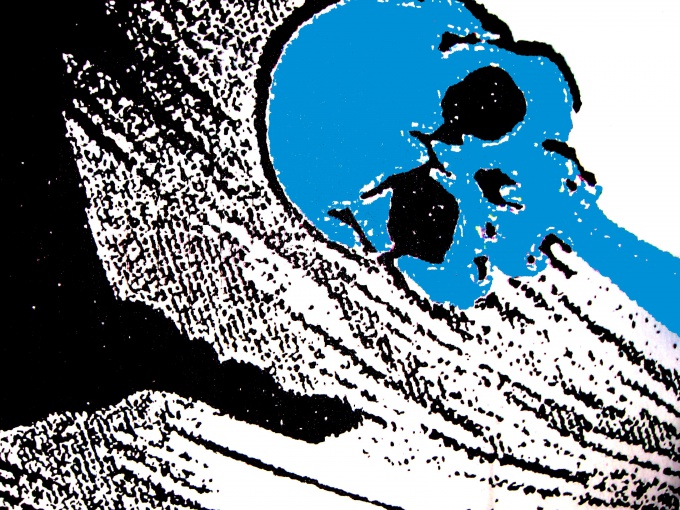You will need
- pencil, eraser, pencil sharpener, paper, workplace, good lighting
Instruction
1
First we need to choose the angle, that is, which side will be shown in the paper skull. The angle is chosen at its own discretion.
2
After the selection is made, which side will be displayed the skulloutlines with a pencil on paper shared the details of the skull. Details are applied lightly to them then you can easily erase and modify.
3
First apply the symmetry axis of the face in a vertical line. Then it outlines, matching the height, the area of the eyes, nose and mouth, as well as lines, but horizontal.
4
After the scheduled areas of the eyes, mouth, nose, outlines the contours of the skull. At this stage it is necessary to pay attention to the removal of the contour of the skulland relative to the features of the face. If you make the edge too close or far from the objects, you get a deformed skull. Therefore, the distance from the edges of the contour object you can also identify light touches, checking the sample.
5
The next stage is applied to the schematic outlines of the eyes, nose, mouth. At this stage not required detail parts, so they can be represented schematically in the form of rectangles.
6
After it was finished drawing the contours of the skulland the face objects, you can navigate to its detail. At this stage it is better to start with detail objects, persons, and then the contours of the skulland, in order to change the contour of the skulland relative to the features of the face.
7
Detailing is carried out by drawing the outline of eyes, nose and mouth close to the sample at this stage is the adjustment of the resulting parts using your eraser and pencil, until you get a satisfactory result. So does the detailing of the nose and mouth. Because the mouth consists of several parts – the upper and lower jaws, the painting stage of the mouth also can be divided into two phases - first to carry out the details of the upper jaw, then lower.
8
As soon as finished objects, persons turn to the detail of the contour of the skull. At this stage adjusts the curves of the skulland, given the distance from ready-made objects person.
9
After complete detailing of the objects of the face and contour of the skulland you go to the shadow mapping. Shades are needed, in order to portray the volume of the parts of the face and the skull.
10
The shadows are applied as lines around objects, faces and curves of the skulland to increase the darkening in these areas. The shadows are applied with a pencil light touches, but intense. If the shadows are too sharp they can be a little blur with eraser, erasing sharp elements, shadows, and draw them softer.
11
After working on the skull ofω is completed, you can go to the background if it is needed.
Useful advice
For those who draw a skull the first time to get started is to try to draw the skull from the side, i.e. in the FAS. Also the newcomers should try to draw the skull in the presence of the image of the skull, or its replica, to improve visual memory, sense of volume and scale in the process of drawing on paper.
